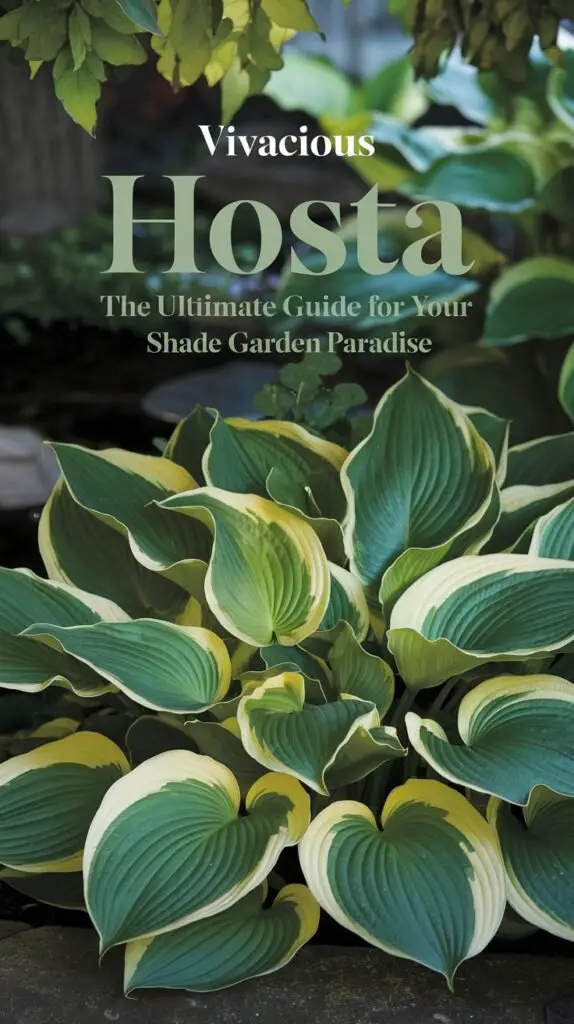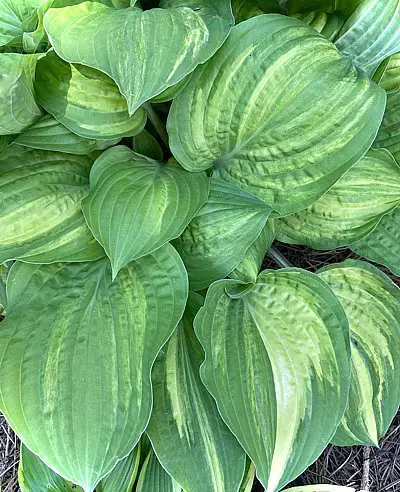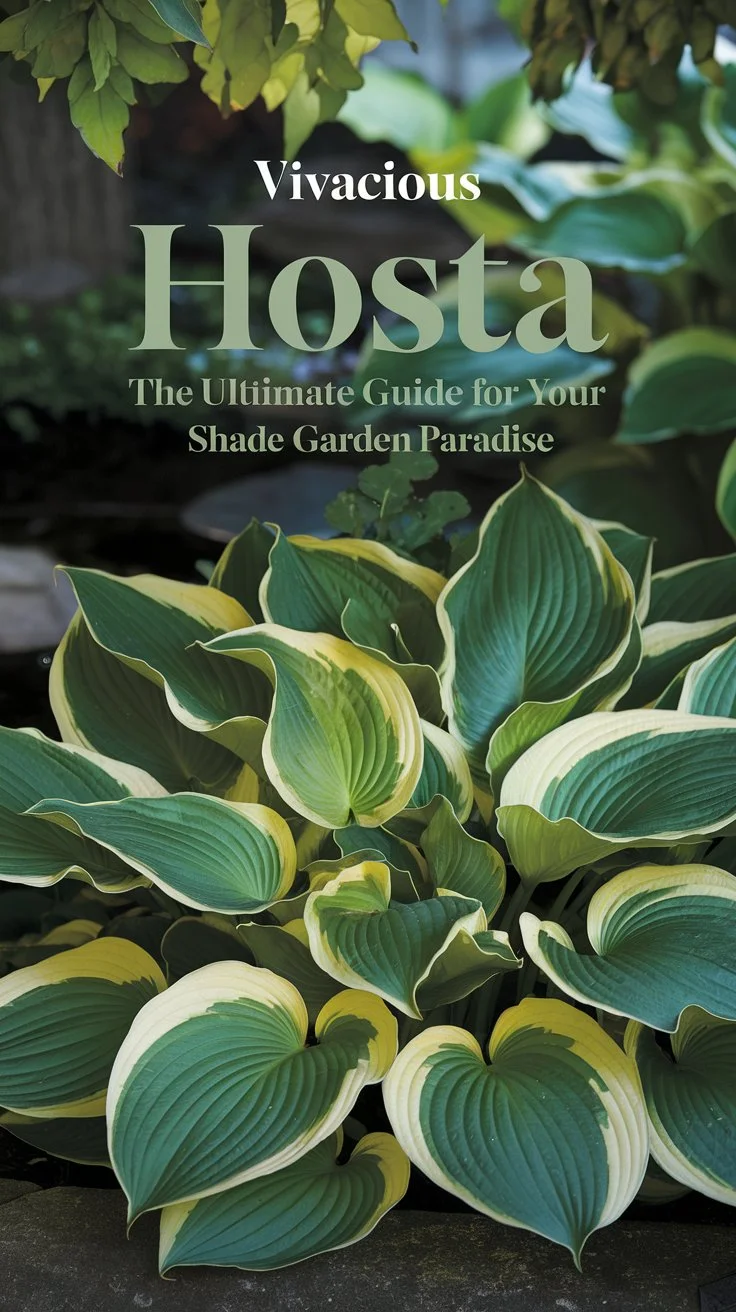Join gardening expert Ashley Scott as I share my tried-and-true tips for growing spectacular Vivacious Hostas. Learn everything from planting secrets to design inspiration for this stunning shade perennial.
Hey there, fellow garden enthusiasts! Ashley Scott here, and today I’m super excited to share my expertise about one of my absolute favorite shade perennials – the Vivacious Hosta. After spending 15 years nurturing these beauties in countless gardens, I’ve got some amazing insights to share with you.

Let me tell you, there’s something magical about the Vivacious Hosta. Picture this: lush, dark green leaves with the most elegant creamy white margins that just light up those shady spots in your garden. I’ve seen these stunning plants transform dull, problematic shade areas into gorgeous garden features that my clients absolutely adore.
The Basics You Need to Know

First things first – if you’re wondering whether Vivacious Hostas will work in your garden, here’s the scoop. These beauties typically grow about 18-22 inches tall and spread to around 30-36 inches. That’s a nice, medium size that works perfectly in most garden settings. And the best part? They’re super hardy, thriving in USDA zones 3-9. For more specific details about your growing zone, check out the USDA Plant Hardiness Zone Map.
My Secret Recipe for Success
Want to know what makes Vivacious Hostas really thrive? Here’s my tried-and-true formula:
Light: These guys love partial to full shade. Morning sun is fine, but protect them from that harsh afternoon heat. I learned this the hard way when I first started gardening!
Soil: Here’s a pro tip – invest in good soil preparation. They love rich, well-draining soil with a pH between 6.0-7.5. Not sure about your soil? The Soil Science Society of America has some fantastic resources to help you get it right.
Water: I always tell my clients – think “consistent moisture” but not “swamp conditions.” I usually water deeply once or twice a week, depending on the weather. Want more watering tips? Check out the excellent guide at Missouri Botanical Garden.
Dealing with Uninvited Guests
Let’s talk about one of the biggest challenges – pests. Slugs love Hostas as much as we do! But don’t worry, I’ve got you covered. My go-to solutions include copper tape or diatomaceous earth for slug control. And if deer are your problem (they love to snack on Hostas!), check out the National Pest Management Association for some effective deterrent strategies.
Creating Picture-Perfect Combinations
Here’s where the fun really begins! I love pairing Vivacious Hostas with other shade-loving beauties. Some of my favorite combinations include:
- Astilbe for their feathery plumes
- Japanese Forest Grass for contrasting texture
- Bleeding Heart for spring drama
Want more inspiration? The Better Homes & Gardens – Shade Garden Plans has some gorgeous design ideas.
Tips from My Garden to Yours
After years of working with these plants, here are some insider tips I swear by:
- Plant in groups of three or more – trust me, it makes a huge impact!
- Mulch well to keep those roots cool and moist
- Don’t forget to divide them every 4-5 years to keep them healthy and get free plants
Container Growing? Absolutely!
Recently, I’ve been helping many clients grow Vivacious Hostas in containers, and it works beautifully! Just remember:
- Use large pots with good drainage
- Choose quality potting mix
- Water more frequently than in-ground plants
The American Hosta Society has some fantastic container growing guidelines if you want to explore this option.
Seasonal Care Made Simple
Spring is show time! This is when you’ll see those beautiful leaves emerging. Give them a boost with slow-release fertilizer, and they’ll reward you with gorgeous foliage all season long.
Summer maintenance is pretty chill – just keep up with watering and watch for any pest issues. If you spot any problems, the Cornell University’s Plant Disease Diagnostic Clinic has excellent resources for identifying and treating common issues.
Fall is simple too – just clean up fallen leaves and cut back the foliage after the first frost. In colder zones, I like to add a layer of mulch for winter protection.
Final Thoughts
You know what I love most about Vivacious Hostas? They’re like the reliable friends of the garden world – they show up every spring, looking gorgeous with minimal fuss. Whether you’re a newbie gardener or a seasoned pro, these plants are sure to become one of your favorites too.
For even more detailed information and growing tips, be sure to check out the American Hosta Society’s Research Page. And remember, gardening is a journey – take your time, observe your plants, and most importantly, enjoy the process!
Have you grown Vivacious Hostas in your garden? I’d love to hear about your experiences in the comments below. And if you found this guide helpful, why not share it with your gardening friends?
Happy gardening, everyone!
-Ashley Scott Professional Gardener and Hosta Enthusiast
For more gardening tips and plant care guides, visit usagardenhub.com.





2 Comments on “Vivacious Hosta: The Ultimate Guide for Your Shade Garden Paradise”